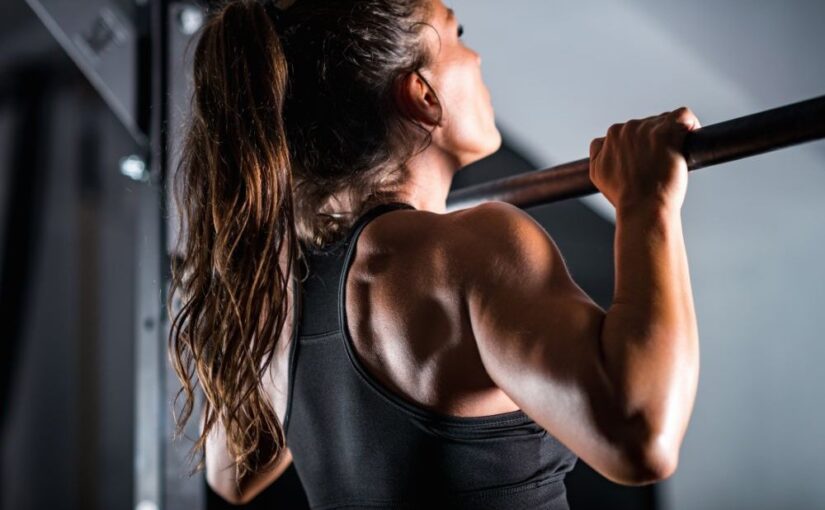Pull-ups and chin-ups are two of the most popular bodyweight exercises for building upper body strength. While they may seem similar, they have distinct differences in grip, muscle engagement, and overall benefits. This article will break down these differences, helping you choose the right exercise for your fitness goals.
What Are Pull-Ups?
Pull-ups are performed with an overhand grip (palms facing away) on a bar. This grip primarily targets the upper back, shoulders, and arms, particularly the latissimus dorsi, trapezius, and rhomboids.
Benefits of Pull-Ups
- Upper Back Strength: Pull-ups are excellent for developing the muscles of the upper back, contributing to better posture and overall upper body strength.
- Core Engagement: Performing pull-ups requires stability, which means your core muscles are also engaged to maintain proper form.
- Variety of Variations: Pull-ups can be modified with different grips (wide, narrow, or neutral) to target specific muscles more effectively.
What Are Chin-Ups?
Chin-ups are executed with an underhand grip (palms facing you). This grip emphasizes the biceps and also works the back, but with a slightly different focus than pull-ups.
Benefits of Chin-Ups
- Bicep Development: Chin-ups place greater emphasis on the biceps, making them a great choice for those looking to build arm strength.
- Easier for Beginners: Many find chin-ups easier to perform than pull-ups, thanks to the bicep involvement, which can make it more accessible for those starting out.
- Enhanced Shoulder Flexibility: The grip position in chin-ups can promote better shoulder mobility and flexibility.
Key Differences
Grip Position
- Pull-Ups: Overhand grip (palms away).
- Chin-Ups: Underhand grip (palms facing you).
Muscle Activation
- Pull-Ups: More emphasis on the upper back and lats.
- Chin-Ups: Greater focus on the biceps along with back muscles.
Difficulty Level
- Many people find chin-ups to be slightly easier than pull-ups due to the bicep support, making them a good starting point for beginners.
Which Should You Choose?
Your fitness objectives will ultimately determine whether you choose pull-ups or chin-ups:
- For Back Strength: If your primary goal is to strengthen your upper back and improve your overall pulling strength, incorporate pull-ups into your routine.
- For Arm Development: If you want to focus on building your biceps and arm strength, chin-ups are the better option.
- For Overall Fitness: Including both exercises in your workout regimen can provide balanced upper body strength and prevent plateaus.
Tips for Performing Pull-Ups and Chin-Ups
- Warm Up: Always warm up your upper body before attempting these exercises to prevent injury.
- Focus on Form: Maintain a straight line from your head to your toes. Refrain from swinging or relying on momentum to perform the exercise.
- Progress Gradually: If you struggle with full pull-ups or chin-ups, consider using resistance bands or performing assisted variations until you build strength.
- Incorporate Both: Mixing both exercises into your routine can provide comprehensive benefits and keep your workouts varied.
Conclusion
Both pull-ups and chin-ups are effective exercises that can significantly enhance your upper body strength. By understanding their differences and benefits, you can make an informed decision on which exercise to prioritize based on your personal fitness goals. Whether you choose pull-ups, chin-ups, or a combination of both, these exercises will help you develop a strong, balanced upper body.

